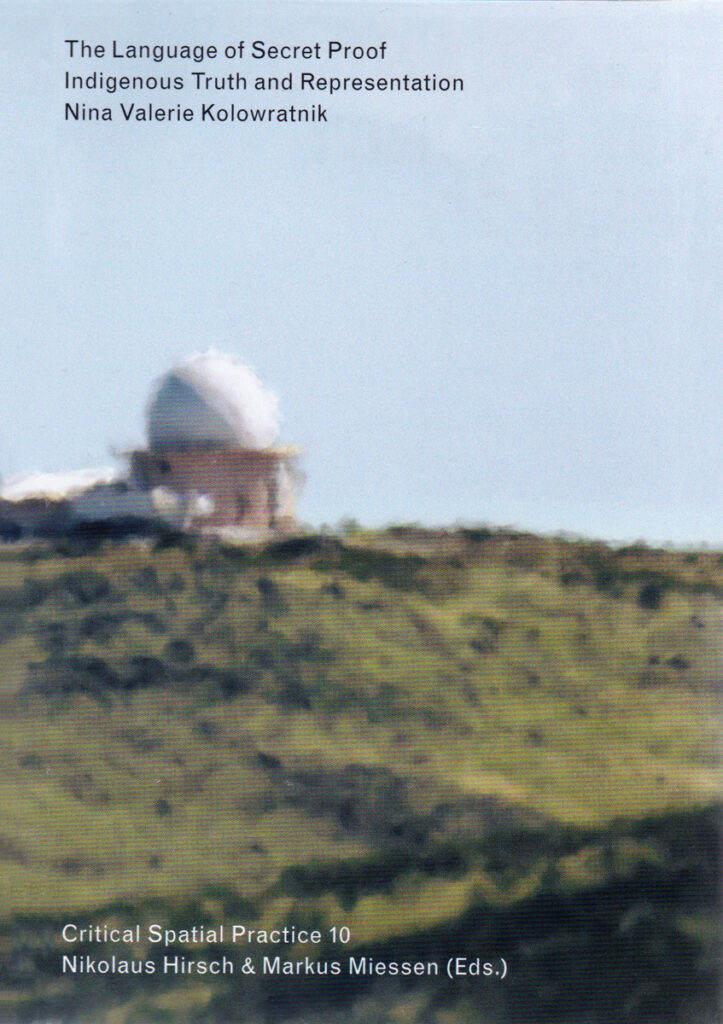Critical Spatial Practice 10: The Language of Secret Proof
Indigenous Truth and Representation
In ‘The Language of Secret Proof’, Nina Valerie Kolowratnik challenges the conditions under which Indigenous rights to protect and regain traditional lands are currently negotiated in United States legal frameworks. The tenth volume in the Critical Spatial Practice series responds to the urgent need for alternative modes of evidentiary production by introducing an innovative system of architectural drawing and notation.
Today, most Western legal forums utilized by Indigenous communities for recognition of their rights continue to employ evidentiary rules that do not allow for Native truths to be accepted as “reliable” evidence. When tribes are asked to provide proof of their traditional connection to the land, what Western legal forums accept as documentation does not truly represent or respect tribal culture and traditional formats of knowledge transfer.
Kolowratnik’s research focuses on the double bind Pueblo communities in the American Southwest are confronted with when they become involved in a legal effort to reclaim and protect ancestral lands, since the process of producing evidence runs counter to their structural organization around oral history and cultural secrecy. The spatial notational systems developed by Kolowratnik with the support of Hemish people, members of Jemez Pueblo in northern New Mexico, and presented in this volume are an attempt to produce evidentiary documentation that speaks Native truths while respecting demands on secrecy. These systems also attempt to instigate a dialogue where there currently is none, deconstructing the fixed opposition between secrecy and disclosure within Western legal systems.

